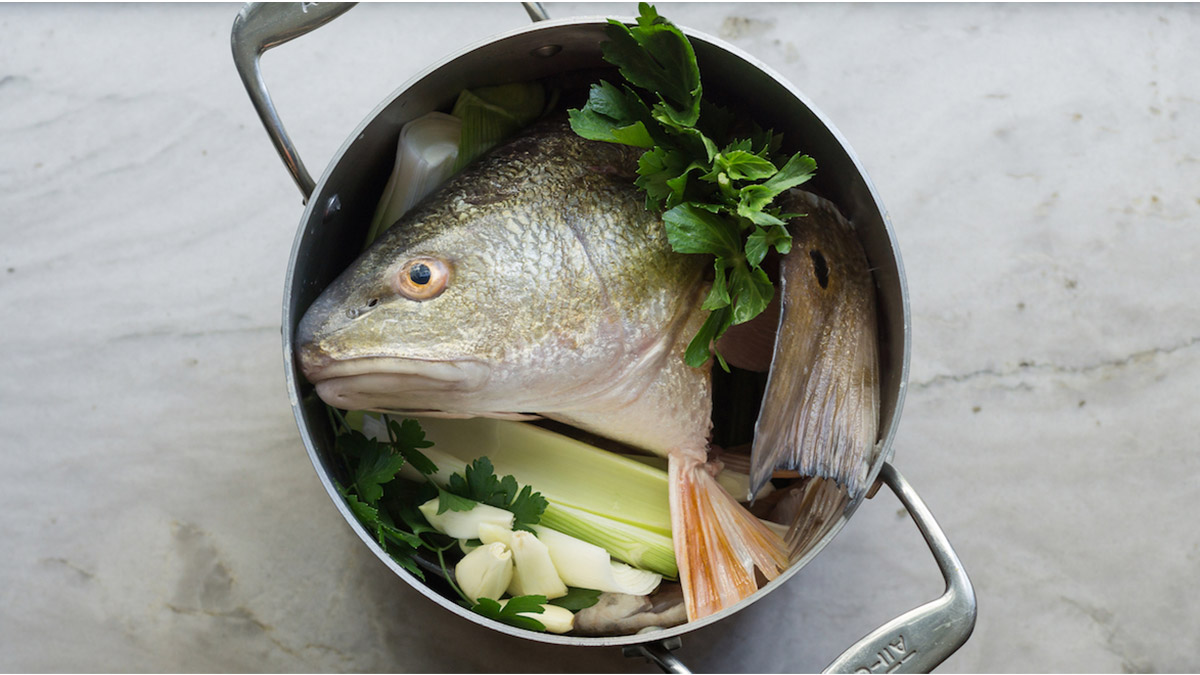How To Make Fish Stock
Your folders
Your folders
Author : Danielle Prewett

Ingredients
Export 11 ingredients for grocery delivery
Instructions
Step 1
Clean the fish well by scrubbing the fins and scales under running water. Use a sharp knife and cut around the outside of the gills at the base of the fish’s head to remove.
Step 2
Fill a large stockpot with water and stir in 3 tbsp. of kosher salt. Submerge the fish and allow it to soak for one hour. While soaking, put the pot in the refrigerator if you have room. This step is optional; I recommend doing it if your fish has a strong bloodline. Drain the water and rinse the fish again. Set aside.
Step 3
Wipe the pot clean and place it on the stovetop over medium heat. Pour in a light drizzle of olive oil and add the leeks and onions. Gently stir and sauté to sweat the onions until soft and translucent. Add the celery and garlic. Cook one additional minute and deglaze with white wine. Allow the alcohol to burn off and the wine to evaporate some, then add in peppercorns, herbs, and the fish.
Step 4
You will want the highest ratio of fish to water. I try to break the fish bones in half and smash them down, so the fish take up less volume and release gelatin. Fill the pot with water till the fish is just covered. Increase heat to high. Keep the heat high until you begin to see the water bubble, then reduce it to the lowest setting. Don’t allow it to come to a full boil.
Step 5
Gently simmer the stock for 30-45 minutes, skimming gunk off the surface as necessary. Fish bones are fragile and can dissolve quickly. Overcooking will dissolve the calcium in the bones and create a chalky, cloudy broth. When you notice the head and bones are falling apart, remove the pot from heat.
Step 6
Use tongs and “fish” out the bones and head. The head can provide a great deal of meat, so reserve what you can for a simple soup.
Step 7
Pour the broth through a fine mesh strainer to capture the solids. If you wish for better clarity, you can repeat this step, using a cheesecloth or paper towel to line the strainer.
Step 8
Either use the warm broth that day, store in airtight containers in the freezer, or pressure can them for future use. If you notice the broth turns to jelly after being chilled, then pat yourself on the back for creating a great stock full of collagen! This will melt when heated and add more body to your stew.
Step 9
Note: Other variations of fish stock include either parsnip or fennel.